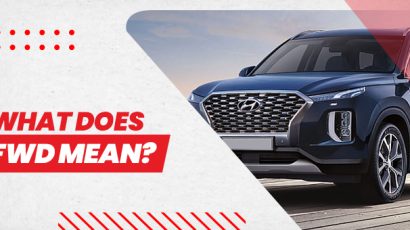
Car consumers are still debating between All-wheel Drive vs Four-wheel Drive (AWD vs 4WD). Each system improves control and traction, particularly on difficult terrain, in its own way.
Understanding the intricate disparities between AWD and 4WD is crucial for choosing the optimal system for your specific driving needs and conditions. So, let’s learn the difference between AWD and 4WD in comprehensive detail in this article. Furthermore, we will also look at the specific scenarios where each system works best.
AWD Explained
The powertrain system known as AWD, or All-wheel Drive, is made to transfer power to a vehicle’s four wheels continually. It operates by engaging all wheels at all times, adjusting power distribution dynamically to each wheel based on traction needs.
Typically, AWD systems are more common in passenger vehicles and crossover SUVs, providing enhanced stability and traction on various road surfaces, including wet or slippery conditions.
The primary advantage of AWD lies in its ability to deliver power to wheels instantly with better grip. This real-time adaptation optimizes handling and improves overall stability, especially in adverse weather conditions or during spirited driving.
Benefits of AWD
AWD, or All-Wheel Drive, presents several notable benefits that cater to a wide range of driving scenarios:
Enhanced Traction: The capacity of AWD to transfer power to all four wheels at once is one of its main advantages. This function greatly increases grip on a variety of road surfaces, such as those that are slick, damp, or covered in snow. By constantly adjusting the power to each wheel, AWD maximizes grip, ensuring better stability and control.
Improved Handling: Better handling and stability are made possible with AWD systems, especially in bad weather. By spreading power across all wheels, the system optimizes grip and minimizes slippage, allowing for smoother and more predictable handling, even during cornering or sudden maneuvers.
Enhanced Performance: Better acceleration and performance are frequently seen by AWD-equipped vehicles, particularly in difficult driving circumstances. The consistent power delivery to all wheels ensures efficient use of available traction, resulting in improved performance and responsiveness, whether it’s navigating through inclement weather or uneven terrain.
Safety and Stability: AWD improves stability and control, which raises the bar for overall vehicle safety. It is a great option for drivers who regularly deal with bad weather or uneven roads since it lowers the chance of sliding or losing control.
Versatility: AWD’s adaptability to different driving conditions makes it a versatile choice for a wide range of vehicles, including sedans, crossover SUVs, and sports cars. This drivetrain system caters to diverse driving preferences without compromising performance or efficiency.
4WD Unveiled
Contrary to AWD, Four-Wheel Drive (4WD) systems are often found in trucks and off-road vehicles. Unlike AWD, 4WD systems usually have a selectable feature that drivers can engage or disengage manually.
4WD operates by sending equal power to all four wheels simultaneously, ensuring maximum traction in challenging off-road environments or when traversing rugged terrains. The standout feature of 4WD systems lies in their capability to provide superior traction in demanding off-road scenarios. By splitting power equally among all wheels, 4WD enables vehicles to navigate through mud, sand, steep inclines, and other rough conditions where traction is a challenge.
Also read: A Comprehensive Review Of The Nissan Juke: A Closer Look
Benefits of 4WD
Four-wheel drive (4WD) offers several advantages that cater to specific driving needs, especially in challenging terrains and off-road conditions:
Superior Off-Road Capability: The primary advantage of 4WD is its exceptional off-road prowess. Vehicles equipped with 4WD systems excel in traversing rough terrains, such as mud, sand, gravel, and steep inclines. The equal power distribution to all four wheels enhances traction, enabling the vehicle to navigate through challenging landscapes with ease.
Enhanced Traction and Control: 4WD significantly improves traction and control, especially in demanding off-road environments where standard two-wheel drive vehicles struggle. By engaging all wheels simultaneously, 4WD minimizes wheel slippage and maximizes grip. This allows for better control and stability on uneven surfaces.
Increased Towing and Hauling Capacity: Vehicles with 4WD often have higher towing and hauling capacities. Enhanced traction from 4WD systems improves handling of heavy loads. It’s ideal for towing trailers or hauling cargo in tough conditions.
All-Weather Capability: While primarily renowned for off-road performance, 4WD systems also offer advantages in adverse weather conditions. 4WD provides superior grip and control, enhancing overall safety in bad weather—whether negotiating slick conditions or driving on snow-covered roadways.
Selectable Functionality: Unlike some AWD systems that operate automatically, 4WD typically comes with a selectable feature. Drivers have the flexibility to engage or disengage the 4WD system based on specific driving conditions. This allows for better fuel efficiency when 4WD isn’t necessary, enhancing overall vehicle performance.
Key Differences between AWD and 4WD
Usage Flexibility: AWD is suitable for daily driving on varied road surfaces, offering enhanced stability and traction in adverse weather conditions. 4WD, on the other hand, is best suited for off-road adventures and extreme terrains due to its robust traction capabilities.
Engagement Mechanism: AWD operates automatically, distributing power to wheels based on traction needs without driver intervention. In contrast, 4WD typically requires manual engagement by the driver, allowing them to select when to activate the system based on driving conditions.
Performance in Conditions: AWD excels in providing better handling and stability on paved roads in slippery or challenging conditions, such as rain, snow, or ice. Conversely, 4WD shines in off-road settings, conquering rugged terrains and maintaining traction on uneven surfaces.
Choosing the Right System
Selecting between AWD and 4WD depends significantly on individual driving requirements and environmental conditions. For urban commuters or those navigating through varying weather conditions, AWD offers a balanced blend of traction and stability. However, individuals seeking off-road adventures or dealing with extreme terrains should opt for the rugged capabilities of 4WD.
Considerations such as fuel efficiency, maintenance costs, and the vehicle’s intended use are pivotal in making an informed decision. AWD systems generally offer better fuel economy due to their on-demand nature, whereas 4WD vehicles may consume more fuel due to their robust power distribution to all four wheels.
Where to Find AWD and 4WD Cars
When you are searching for a new vehicle, you can easily review vehicle models on the SBT Japan website. The website allows you to apply filters, making it easier to search for only AWD or 4WD cars. You can view the model specifications and prices as well as talk to customer support for further queries.
The website offers a vast selection of cars, trucks, SUVs, and more. Furthermore, there are diverse options to suit various preferences and needs. Each vehicle undergoes rigorous inspection and quality checks to guarantee top-notch performance and reliability, instilling confidence in buyers regarding the vehicle’s condition.
SBT Japan’s user-friendly platform facilitates a hassle-free browsing and purchasing process. It is supported by transparent information about vehicle specifications, history, and pricing.
End Word
In summary, the choice between AWD and 4WD boils down to specific driving needs and environmental conditions. Everyday commuters benefit greatly from AWD’s superior stability and traction on a variety of road conditions. Meanwhile, 4WD shines in off-road settings, tackling rugged terrains with its superior traction capabilities.
Understanding the disparities between AWD and 4WD empowers individuals to make informed decisions. Whether it’s navigating through urban streets or conquering untamed terrains, the choice between AWD and 4WD remains pivotal in optimizing driving experiences.











